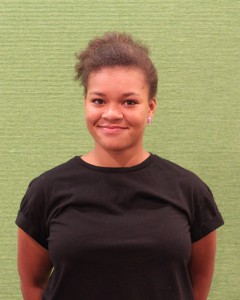By Liza Wilson- 11th Grade, Oakland Catholic High School
Merriam-Webster defines cryptozoology as “the study of and search for animals and especially legendary animals (as Sasquatch) usually in order to evaluate the possibility of their existence.” At the Pittsburgh Center for the Arts, this study has been cleverly used to teach students from ages 11-13 to be media-literate individuals in a fun and exciting way.
When I arrived at the Pittsburgh Center for the Arts last week, the students had just gotten back from lunch and were going to watch a MonsterQuest documentary on the Sasquatch. Molly Deurig, one of the three instructors of the program, informed me that the students would learn about hoaxes and the way they are presented. This would allow them to learn how audiences are misled and help them determine whether or not something they see in the media is real. Media literacy is an important skill for young people to learn early. Children and teens tend to believe everything they see on the internet or TV, which can lead to making bad decisions in the future.
The leader of the Cryptozoology workshop, Tim Israel, explained the purpose of the program further. The students are watching the documentary to point out the common tropes and clichés of media hoaxes. He said that this will “build muscles in using the scientific process” because the students learn to demand evidence and find the truth. Becoming a more evidence-based thinker helps the students find artificiality in all media, from tabloids to politics. “Extraordinary claims demand extraordinary evidence,” he said.
After watching most of the documentary, the students pointed out some of the tactics that they saw: shaky cam, circle cam, the rule of thirds, night vision, jump zoom, booming voice overs, b-roll, dramatization, and slow motion repeat shots. Tim explained that these documentaries are only made so TV companies can sell more ad space. They contain a lot of useless “filler” footage and very few answers.
Next, the students broke off into groups to brainstorm and create their own mythical creature and backstory. I believe I heard “giant snake aliens” mentioned once or twice.
All of this work is in preparation for the main project of the workshop. The students will use the information they have gathered to make their own “mockumentary” which will make fun of the tropes and clichés of hoaxes in the media. The students all seem very creative and I’m sure the mockumentary will be fantastic. This program is a great opportunity for the students to not only have fun but to learn the skills of film-making and, of course, media literacy, which will help them to make better decisions and be more responsible citizens later in life.
 Liza Wilson is 16 years old and a rising junior at Oakland Catholic High School. She lives in Monroeville, PA. Her interests include foreign affairs and languages. She enjoys rowing and watching movies.
Liza Wilson is 16 years old and a rising junior at Oakland Catholic High School. She lives in Monroeville, PA. Her interests include foreign affairs and languages. She enjoys rowing and watching movies.
Leave a Comment